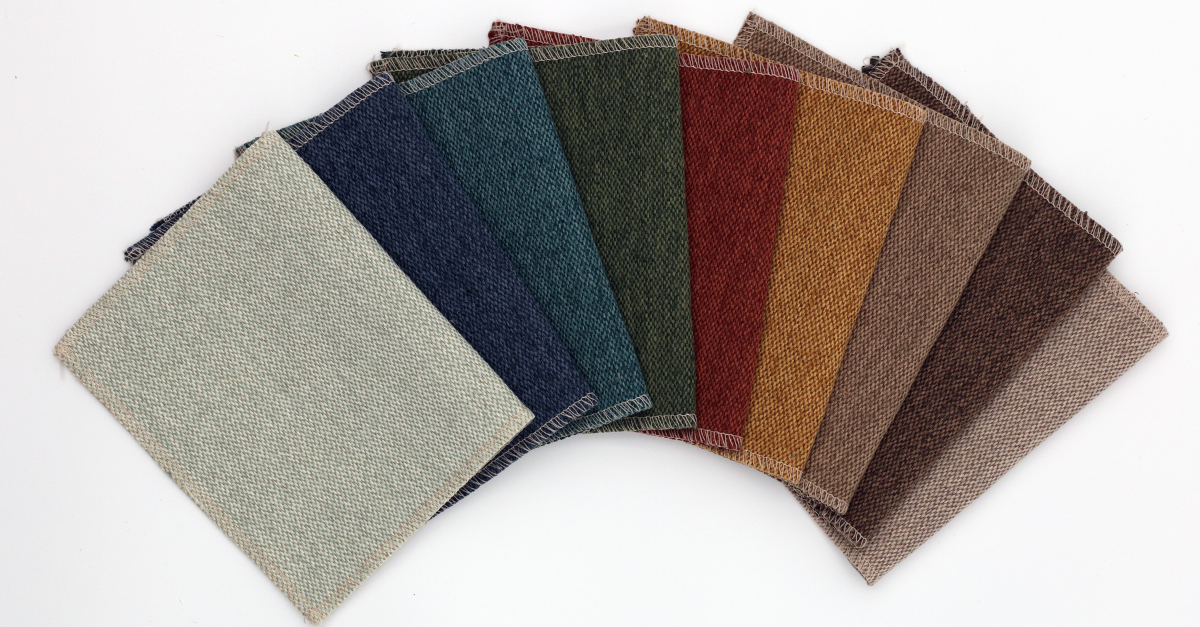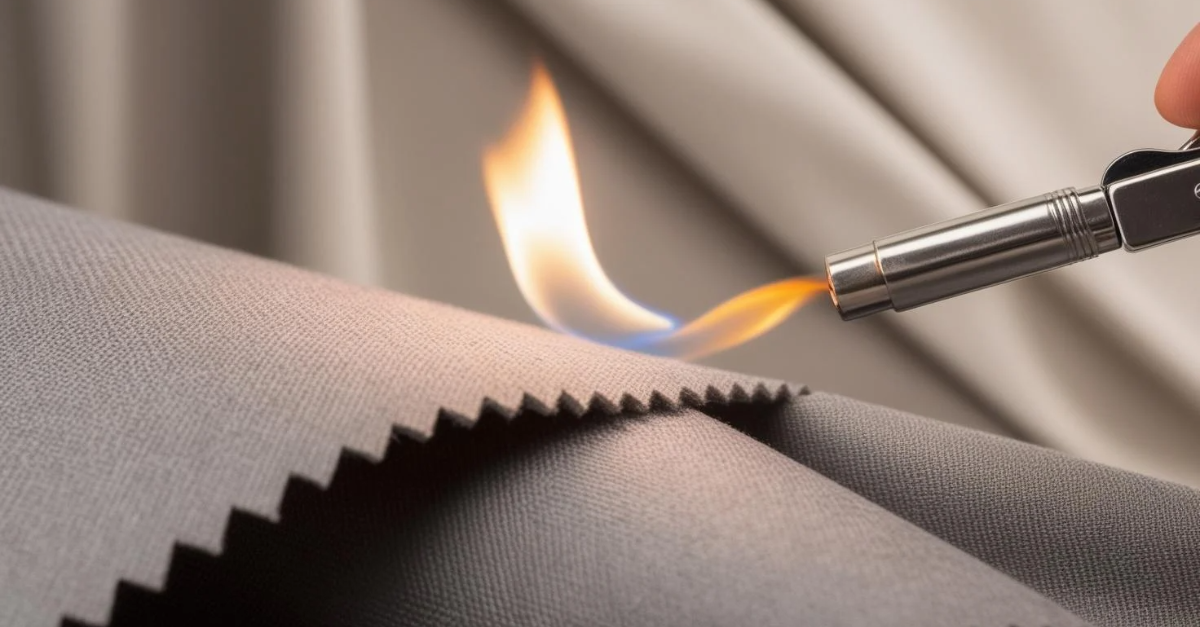Difference between heat and temperature
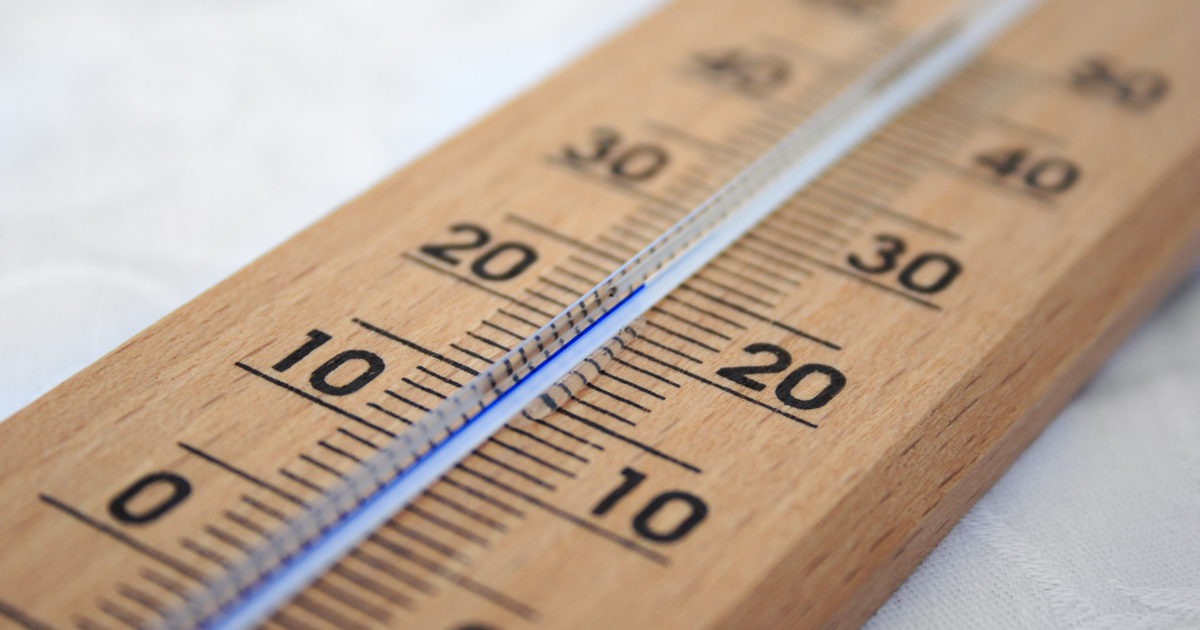
Have you ever wondered why a cup of hot coffee feels different from a hot iron, even though they might register the same temperature? The answer lies in understanding the crucial distinction between heat and temperature. Although they are closely related, they represent different aspects of thermal energy. For companies like Dabedan, specializing in the manufacture of flame-resistant fabrics, grasping the subtle distinctions between these concepts is critical. This knowledge not only informs material science but also ensures the safety and efficacy of products used in high-temperature environments.
How is temperature related to heat?
Temperature and heat are fundamental concepts in thermodynamics, often used interchangeably in everyday language, yet they represent different physical realities.
Temperature is a measure of the average kinetic energy of the molecules in a substance, indicating how hot or cold an object is and is measured in degrees (Celsius, Fahrenheit, or Kelvin).
Conversely, heat refers to the transfer of thermal energy from a hotter object to a cooler one, driven by the temperature difference between them. Heat is a dynamic form of energy that manifests as the movement from one body to another and is measured in joules.
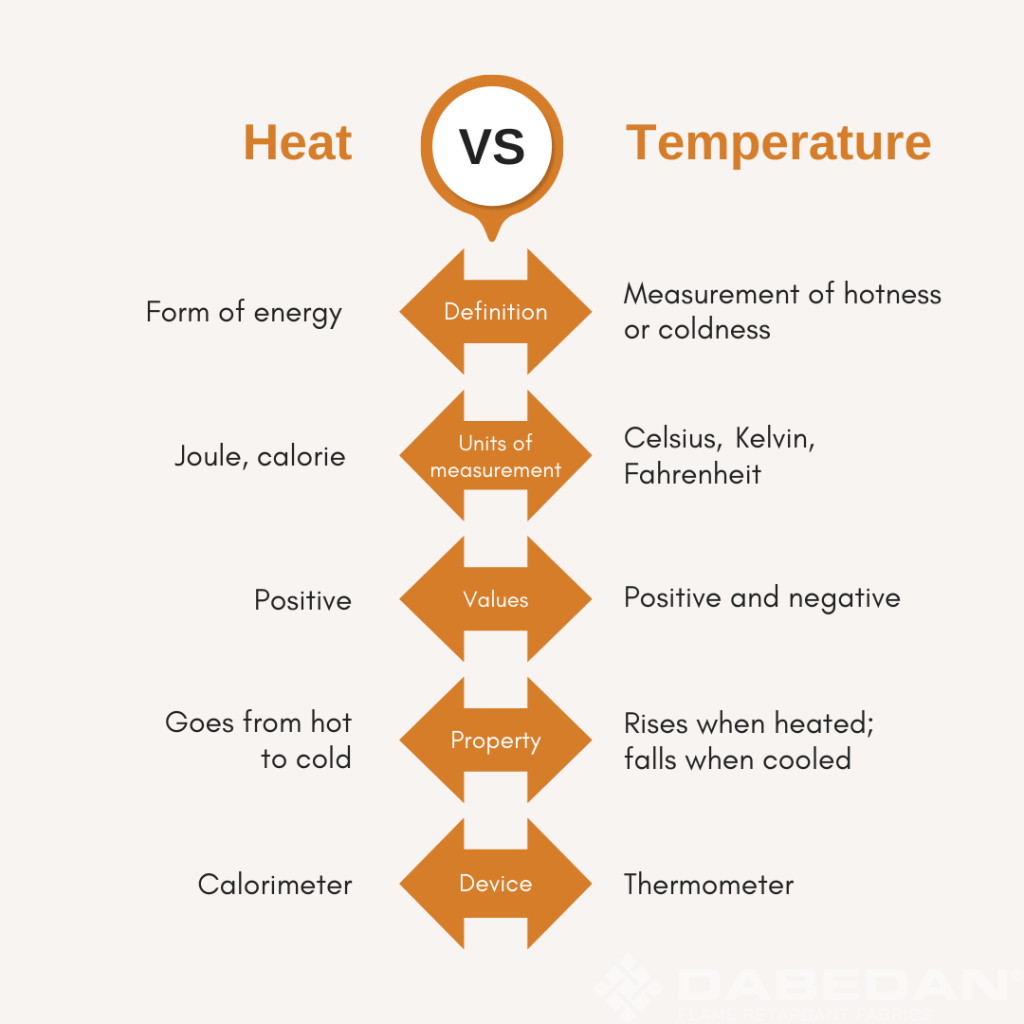
What is heat?
Heat is essentially the transfer of thermal energy between objects or systems due to a temperature difference. It resembles the flow of energy, akin to current moving through a wire. For example, when you toss a hot potato to a friend, the thermal energy—heat—moves from the potato (higher temperature) to your friend’s hand (lower temperature). Heat is measured in joules (J), and the greater the temperature difference between the objects, the faster the heat is transferred.
What is temperature?
Temperature, on the other hand, measures the average kinetic energy of the particles within an object. Consider it as the intensity of heat. The faster the particles vibrate or move, the higher the temperature, and vice versa Thus, the hot coffee has particles with higher average kinetic energy compared to the cup holding it, even if they display the same temperature reading. Temperature is a property of a system, similar to its length or mass, and is measured using scales like Celsius (°C), Fahrenheit (°F), or Kelvin (K).
Understanding heat vs temperature
Here’s an analogy to clarify the difference:
Imagine a crowd at a concert. The temperature represents the average level of excitement (kinetic energy) among the crowd. A high-energy band might make the crowd jump and move more, indicating a higher temperature.
Now, imagine someone throws out glow sticks (thermal energy). The transfer of these glow sticks from person to person symbolizes heat, increasing the overall excitement (temperature) in specific areas of the crowd.
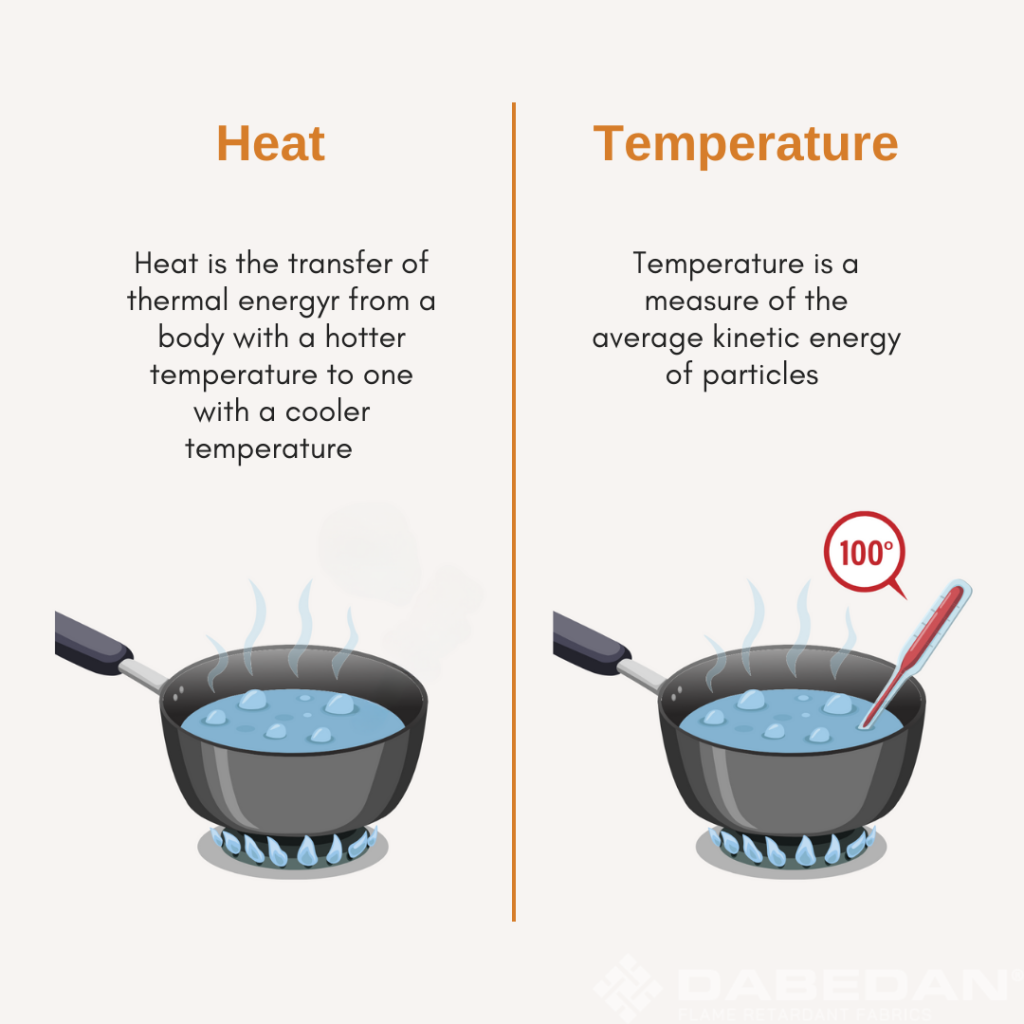
Key Points:
– Heat is the flow of thermal energy, while temperature is a measure of average kinetic energy.
– Heat is transferred between objects, whereas temperature is a property of an individual object.
– Heat is measured in joules (J), while temperature is quantified using scales like °C, °F, or K.
In conclusion, understanding the interconnected yet distinct aspects of heat and temperature is essential in physical science. Temperature gauges how hot or cold an object is, serving as an index of the particle activity within it, while heat represents energy in motion, transferred between bodies or systems. For industries like textile manufacturing, where managing thermal properties is vital, comprehending these differences is not just academic—it’s a practical necessity that significantly impacts product performance and safety.
Subscribe to our newsletter
Receive all communications in your email to stay up to date with our news, as well as news and advice about the sector.
Latest published articles
Do you need advice?
We collaborate with you to develop custom designs tailored to the needs of each project, creating the fabric according to aesthetic, quality, or usage requirements.
Get in touch with us, and we will advise you on our products, or request a free sample.

